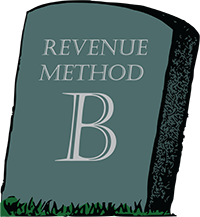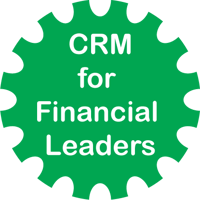Deltek Vision Purchasing
 With built-in approvals and workflows, the Purchasing module in Deltek Vision safeguards against inaccurate or inefficient purchases in a paperless environment. Whether simple or complex, a company’s entire requisition, purchasing and receiving cycle can be run by Deltek Vision Purchasing while maintaining complete integration with the Financial Accounting, Project Management, and Resource Planning Vision modules. Thanks to the built-in workflows and approval processes, all purchases are accurately tracked using the Purchasing module.
With built-in approvals and workflows, the Purchasing module in Deltek Vision safeguards against inaccurate or inefficient purchases in a paperless environment. Whether simple or complex, a company’s entire requisition, purchasing and receiving cycle can be run by Deltek Vision Purchasing while maintaining complete integration with the Financial Accounting, Project Management, and Resource Planning Vision modules. Thanks to the built-in workflows and approval processes, all purchases are accurately tracked using the Purchasing module.
See What Deltek Vision Purchasing Can Do for You
Here are some key features of the Deltek Vision Purchasing module:
- Security - Employee access is defined by management controls limiting access to each requisition stage during the purchase cycle and allowing the company to maintain a secure purchasing environment
- Inventory Insight - Cost by location and inventory on hand can be tracked and cost automatically assigned to the projects
- Approvals - Automatic notifications from Vision sent to authorized employees when a purchase request is submitted making the approval process quick and streamlined
- Integration - Inventory information can be shared with other Deltek Vision modules, such as project control, ledger, and financial reporting, resulting in improved data accuracy of projects, accounting, planning and budgeting
- Currency Management - Vision Purchasing can also make use of the Vision Multi-Currency module allowing all purchasing activities to be conducted in multiple global currencies
Gain Control of Your Purchasing Process
Manage the complete purchasing cycle online in a paperless environment offering browser-based requisitions, purchase orders, RFQs and receiving. Highlights include:
- Quickly generated price quotes and requisitions
- Numerous purchasing-related reports
- Support for standard, blanket and service purchase orders and tracking change orders
- Purchase orders created from quotes or requisitions or those previously entered
- Automated requisitioning, including employee-created requisitions and online approvals
- A complete receiving function, including support for partial receipts and backorders
The Advantages of Using Deltek Vision Purchasing
The Purchasing module of Deltek Vision allows project-based firms to manage the purchasing cycle, from RFQs to receiving and voucher entry. This paperless purchasing environment is secure due to the management defined user access and is easily maintained. Full integration with other Vision modules such as Accounting, Project Reporting, Billing, and Project Planning provides data consistency and communication throughout all parts of Vision. Finally, accurate purchasing reports are guaranteed using Deltek Vision Purchasing.



 One of the main responsibilities of a project manager is managing the profitability of his projects. It is easy to look at hours charged to a project at billing rates minus the value of those hours at cost to see the gross profit of a project, but gross profit doesn’t give a true picture of profitability. Most firms prefer to look at net profit to measure the financial success of projects with net profit being hours at billing rates minus cost plus overhead.
One of the main responsibilities of a project manager is managing the profitability of his projects. It is easy to look at hours charged to a project at billing rates minus the value of those hours at cost to see the gross profit of a project, but gross profit doesn’t give a true picture of profitability. Most firms prefer to look at net profit to measure the financial success of projects with net profit being hours at billing rates minus cost plus overhead.
 There is no shortage of ways for professional services firms to solicit and capture client feedback. Some firms structure their initiative as a once-a-year check-in with repeat clients while others hire outside consultants to conduct third-party client satisfaction interviews. In a previous posting, we reviewed
There is no shortage of ways for professional services firms to solicit and capture client feedback. Some firms structure their initiative as a once-a-year check-in with repeat clients while others hire outside consultants to conduct third-party client satisfaction interviews. In a previous posting, we reviewed 
 Revenue Method B is the most widely used revenue method in Deltek Vision. In fairness, this is Vision’s default method for projects whose charge type is Regular. As a result, most firms use it since it’s easy to deploy and seems to work, or so we think.
Revenue Method B is the most widely used revenue method in Deltek Vision. In fairness, this is Vision’s default method for projects whose charge type is Regular. As a result, most firms use it since it’s easy to deploy and seems to work, or so we think.


 Full Sail Partners, a Deltek Vision Platinum Partner, announced that Concur®, an SAP company and the world’s leading provider of travel, expense and invoice management solutions, has recognized the Full Sail Partners with the 2017 Rising Star Solution Provider of the Year Award at Concur Fusion 2017.
Full Sail Partners, a Deltek Vision Platinum Partner, announced that Concur®, an SAP company and the world’s leading provider of travel, expense and invoice management solutions, has recognized the Full Sail Partners with the 2017 Rising Star Solution Provider of the Year Award at Concur Fusion 2017. There has been an uptick in interest recently from C-Level financial leaders to become more involved with the CRM functions within Vision. You may ask yourself why this new trend is occurring since the CRM module of Vision is for marketing and business development functions. The reason must surely be based on an informational need so that actionable decisions can be made.
There has been an uptick in interest recently from C-Level financial leaders to become more involved with the CRM functions within Vision. You may ask yourself why this new trend is occurring since the CRM module of Vision is for marketing and business development functions. The reason must surely be based on an informational need so that actionable decisions can be made.
 It seems like every time you turn on the news, there appears to be a new emergency. It might be a man-made disaster like the recent I-85 bridge collapse in Atlanta or a natural one like a Snowmageddon event or a devastating wildfire. The concern of lost work time due to an emergency is a reality, especially if employers expect all employee work to be done on site at the office. In order to decrease downtime and loss of productivity due to such emergencies, firms should provide flexible work options for their employees.
It seems like every time you turn on the news, there appears to be a new emergency. It might be a man-made disaster like the recent I-85 bridge collapse in Atlanta or a natural one like a Snowmageddon event or a devastating wildfire. The concern of lost work time due to an emergency is a reality, especially if employers expect all employee work to be done on site at the office. In order to decrease downtime and loss of productivity due to such emergencies, firms should provide flexible work options for their employees.
 A KPI, or Key Performance Indicator, is a measurable value that demonstrates how effectively a company is achieving crucial business objectives. Organizations should use KPIs to evaluate their success at reaching targeted goals. Simply stated, KPIs provide your firm with metrics that compare budgeted amounts to the actual values. KPIs are no longer just for accounting and finance as they now reach deeper into a firm’s operational side examining marketing, business development and project management.
A KPI, or Key Performance Indicator, is a measurable value that demonstrates how effectively a company is achieving crucial business objectives. Organizations should use KPIs to evaluate their success at reaching targeted goals. Simply stated, KPIs provide your firm with metrics that compare budgeted amounts to the actual values. KPIs are no longer just for accounting and finance as they now reach deeper into a firm’s operational side examining marketing, business development and project management.
 It wasn’t long ago that firm management took a “need-to-know” approach with sharing project performance information with staff. Today, most firms have changed their attitude about access to project information. Firm managers want project managers to be engaged with the financial results of their projects and have taken great steps to train them to use the Deltek Vision reporting tools and dashboards. Still, project managers are intimidated and paralyzed by the information they receive.
It wasn’t long ago that firm management took a “need-to-know” approach with sharing project performance information with staff. Today, most firms have changed their attitude about access to project information. Firm managers want project managers to be engaged with the financial results of their projects and have taken great steps to train them to use the Deltek Vision reporting tools and dashboards. Still, project managers are intimidated and paralyzed by the information they receive.